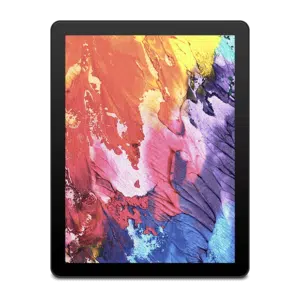E Ink Displays vs. Traditional LCD Screens
E Ink Displays vs. Traditional LCD Screens
Blog Article
E Ink engineering has silently changed exactly how we eat and communicate with electronic content. From e-readers to Electronic shelf labels and electronic signage, that progressive display technology balances readability, power performance, and versatility. But what precisely causes it to be work? Let's have a deeper go through the research E ink computer display and how it functions.
How E Ink Operates
At their core, E Ink is a form of Electronic Paper that uses electrophoretic display technology. A level of little capsules filled with white and black contaminants are stopped in an obvious fluid, called the ink. These contaminants are really priced on one part and adversely priced on the other. When an electrical subject is placed on the pill, the particles move towards either side, causing the surface of the Ink to reflect gentle either as black or white.
This process mimics how standard Ink looks in some recoverable format, offering E Ink their sensible appearance. The engineering can be amazingly energy-efficient since it just needs energy when changing what is displayed on screen.

How E Ink Operates
E Ink technology is based on a idea called electrophoresis, which deals with the movement of priced contaminants halted in a liquid when an electrical subject is applied. Each E Ink display is composed of an incredible number of little pills full of clear liquid, comprising black and white particles. These particles are oppositely charged; black people hold a negative demand, while white people are definitely charged.
When an electrical field is placed on these tablets, the priced particles are manipulated to create the required image or text. For example:
If a good electric subject is applied, the adversely charged black particles go on to the the surface of the pill, creating the area seem black.
However, if a negative electrical area is applied, the definitely charged white contaminants increase to the outer lining, creating the region appear white.
The end result is a sharp, high-contrast display that mimics the appearance of printed Ink on paper.
Crucial Options that come with E Ink Engineering
E Ink technology presents many distinctive benefits that donate to its quick use across different industries:
Low Energy Usage
E Ink displays eat up power only when the information is updated. Unlike old-fashioned LED or LCD displays, they don't need backlighting or regular energy to keep up an image. This makes them acutely energy-efficient and suitable for battery-powered units like e-readers.
Readable in Bright Mild
Unlike many displays that suffer with glare below sunlight, E Ink displays succeed in organic mild conditions. Their paper-like appearance assures minimal vision strain, even after prolonged use.
Broad Watching Aspects
E Ink displays present consistent exposure from just about any direction, creating them well-suited for applications such as for instance digital signage or community displays.

Programs of E Ink Engineering
While e-readers are perhaps the most recognized utilization of E Ink, the engineering is finding their way in to different purposes such as wise laptops, Electronic rack brands found in retail environments, and also wearables. Their flexibility and effectiveness allow it to focus on an increasing quantity of use cases.
color E ink technology embodies the perfect blend of science, design, and realistic usability. By learning the artwork of electrophoresis, this cutting-edge creativity is changing exactly how we interact with electronic displays, offering sustainable and functional alternatives for an significantly electronic age. Report this page